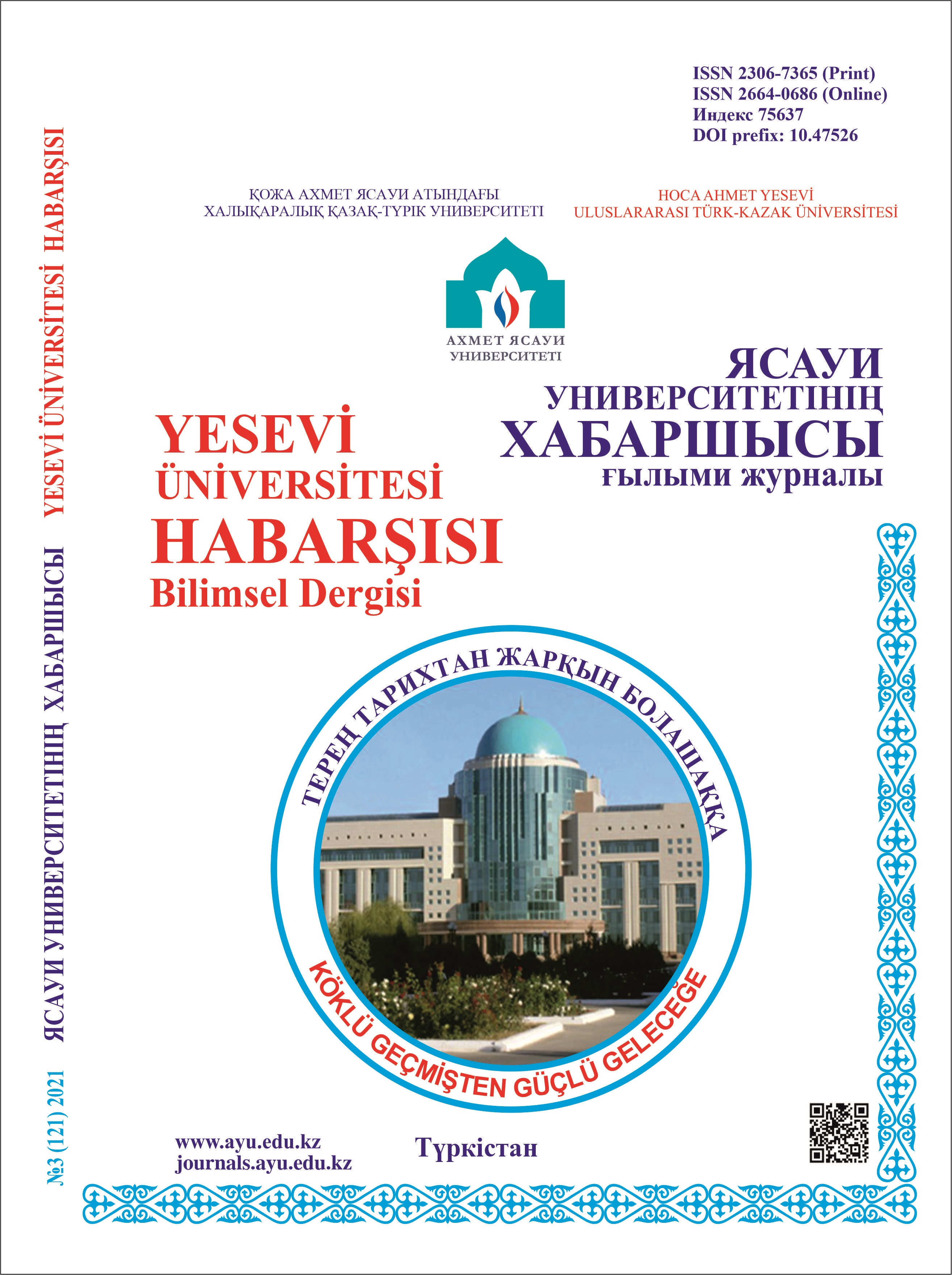STEM EDUCATION IN PHYSICS: DEVELOPMENT OF A LABORATORY STAND FOCUSED ON THE IMPLEMENTATION OF MINI-PROJECTS
Keywords:
STEM education, teaching physics, student, mini-project, laboratory stand, creativity.Abstract
Currently, new technologies are widely used in the context of the development of the information society, secondary and higher education. The use of digital tools, STEM resources, 3D modeling programs and 3D printing equipment, laboratory stands made with their own hands has been widely used in the educational process. All these conditions are aimed at preparing future specialists to meet the requirements of the XXI century. Physics as a fundamental science is one of the fundamental disciplines in the field of STEM. Therefore, the use of STEM elements in teaching physics has a huge impact on the development of the activities of future specialists in the engineering and technical field. Especially STEM products and laboratory stands, developed by students in conjunction with the teacher's guidance, increase the effectiveness of the educational process. This will make it possible to create creative products and thereby develop the scientific and technical industry of the country. The purpose of this study is to implement physics education in universities on the basis of interdisciplinary connections through mini-projects and the development of educational and research stands and to determine the features of their implementation in the educational process. The research used methods of systematic analysis of articles published in highly rated journals, 3D modeling and printing methods, as well as constructive research methods. In addition, qualitative research methods were used in the pedagogical process. The results of the study showed that the development of laboratory stands for the implementation of mini-projects, thereby developing the creativity of students, is of great importance. It became known that students are actively involved in engineering, are interested in this area and increase their knowledge level when performing mini-projects. The results of the study will allow new areas of research to appear in the future, improve the methodology of teaching physics at universities, combine knowledge with science and industry.
References
Al-Khalili J. The World According to Physics // Perspectives on Science and Christian Faith. – 2020. – №72(4). – Р. 248–249. https://doi.org/10.56315/pscf12-20al-khalili
Asrizal A., Annisa N., Festiyed F., Ashel H., Amnah R. STEM-integrated physics digital teaching material to develop conceptual understanding and new literacy of students // Eurasia Journal of Mathematics, Science and Technology Education. – 2023. – №19(7). https://doi.org/10.29333/ejmste/13275
Ramankulov Sh., Choruh A., Polatuly S. STEAM technology as a tool for developing creativity of students: on the example of a school physics course // Ясауи университетінің хабаршысы. – 2022. – №4(126). – Б. 200–211. https://doi.org/10.47526/2022-4/2664-0686.17
Tuyizere G., Yadav L.L. Effect of interactive computer simulations on academic performance and learning motivation of Rwandan students in Atomic Physics // International Journal of Evaluation and Research in Education. – 2023. – №12(1). – Р. 252–259. https://doi.org/10.11591/ijere.v12i1.23617
Nazifah N., Asrizal A. Development of STEM Integrated Physics E-Modules to Improve 21st Century Skills of Students // Jurnal Penelitian Pendidikan IPA. – 2022. – №8(4). – Р. 2078–2084. https://doi.org/10.29303/jppipa.v8i4.1820
Iskakova A.B., Kairbayeva A.K. Methodical foundations of the use of project-based technologies in teaching physics to students of technical specialties of higher education institutions // Bulletin of the Karaganda University. “Physics” Series. – 2019. – №95(3). – Р. 71–77. https://doi.org/10.31489/2019ph3/71-77
Sungur Gül K., Saylan Kirmizigül A. Algodoo based STEM education: A case study of pre-service science teachers // Education and Information Technologies. – 2023. – №28(4). – Р. 4203–4220. https://doi.org/10.1007/s10639-022-11348-2
Казбекова Г.Н., Исмагулова Ж.С. Инновациялық STEM-білім беру тәсілін қалыптастыру // Ясауи университетінің хабаршысы. – 2022. – №3(125). – Б. 200–210. https://doi.org/10.47526/2022-3/2664-0686.17
Slabzhennikova I.M. Methodology for conducting multilevel educational and research laboratory work in physics // Physics in Higher Education. – 2022. – №28(4). – Р. 114–122. https://doi.org/10.54965/16093143_2022_28_4_114
Kanareykin A.I. Determination of the Ideality Factor of the p-n Transition of a Solar Cell by its Current-Voltage Characteristics. In AIP Conference Proceedings. American Institute of Physics Inc. – 2022. – Vol. 2767. https://doi.org/10.1063/5.0127433
REFERENCES
Al-Khalili J. The World According to Physics // Perspectives on Science and Christian Faith. – 2020. – №72(4). – Р. 248–249. https://doi.org/10.56315/pscf12-20al-khalili
Asrizal A., Annisa N., Festiyed F., Ashel H., Amnah R. STEM-integrated physics digital teaching material to develop conceptual understanding and new literacy of students // Eurasia Journal of Mathematics, Science and Technology Education. – 2023. – №19(7). https://doi.org/10.29333/ejmste/13275
Ramankulov Sh., Choruh A., Polatuly S. STEAM technology as a tool for developing creativity of students: on the example of a school physics course // Iasaui universitetіnіn habarshysy. – 2022. – №4(126). – B. 200–211. https://doi.org/10.47526/2022-4/2664-0686.17
Tuyizere G., Yadav L.L. Effect of interactive computer simulations on academic performance and learning motivation of Rwandan students in Atomic Physics // International Journal of Evaluation and Research in Education. – 2023. – №12(1). – Р. 252–259. https://doi.org/10.11591/ijere.v12i1.23617
Nazifah N., Asrizal A. Development of STEM Integrated Physics E-Modules to Improve 21st Century Skills of Students // Jurnal Penelitian Pendidikan IPA. – 2022. – №8(4). – Р. 2078–2084. https://doi.org/10.29303/jppipa.v8i4.1820
Iskakova A.B., Kairbayeva A.K. Methodical foundations of the use of project-based technologies in teaching physics to students of technical specialties of higher education institutions // Bulletin of the Karaganda University. “Physics” Series. – 2019. – №95(3). – Р. 71–77. https://doi.org/10.31489/2019ph3/71-77
Sungur Gül K., Saylan Kirmizigül A. Algodoo based STEM education: A case study of pre-service science teachers // Education and Information Technologies. – 2023. – №28(4). – Р. 4203–4220. https://doi.org/10.1007/s10639-022-11348-2
Kazbekova G.N., Ismagulova J.S. Innovacialyq STEM-bіlіm beru tasіlіn qalyptastyru [Formation of Innovative STEM-education] // Iasaui universitetіnіn habarshysy. – 2022. – №3(125). – B. 200–210. https://doi.org/10.47526/2022-3/2664-0686.17 [in Kazakh]
Slabzhennikova I.M. Methodology for conducting multilevel educational and research laboratory work in physics // Physics in Higher Education. – 2022. – №28(4). – Р. 114–122. https://doi.org/10.54965/16093143_2022_28_4_114
Kanareykin A.I. Determination of the Ideality Factor of the p-n Transition of a Solar Cell by its Current-Voltage Characteristics. In AIP Conference Proceedings. American Institute of Physics Inc. – 2022. – Vol. 2767. https://doi.org/10.1063/5.0127433

